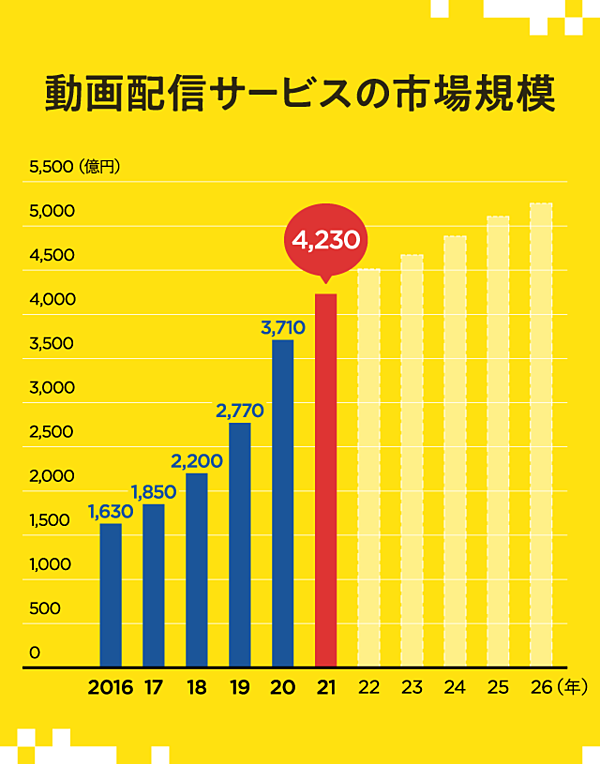今日のボヤキ 2/26
近年、アプリ上での生放送を通じて人気を競い、自己表現の場としてだけでなく、大金を掴むチャンスも生まれてきているライブ配信は、現在多くのサービスが乱立しており、まさに群雄割拠の様相だ。
その中で国内トップを走るライブ配信アプリ「Pococha(ポコチャ)」の姉妹アプリとして、昨年リリースされたのが、「Voice Pococha(ボイスポコチャ)」だ。
なぜ、あえて今音声特化なのか。差別化は。戦略は。 近年、アプリ上での生放送を通じて人気を競い、自己表現の場としてだけでなく、大金を掴むチャンスも生まれてきているライブ配信は、現在多くのサービスが乱立しており、まさに群雄割拠の様相だ。
その中で国内トップを走るライブ配信アプリ「Pococha(ポコチャ)」の姉妹アプリとして、昨年リリースされたのが、「Voice Pococha(ボイスポコチャ)」だ。
なぜ、あえて今音声特化なのか。差別化は。戦略は。
デジタルコンテンツ協会によるデータでは、2016年時点でのライブ配信の国内市場規模は1600億円程度だったのが、2022年時点では4500億円程度と、継続的に成長しています。
出典:一般財団法人デジタルコンテンツ協会『動画配信市場調査レポート2022』
大きく分けて「メディア型」と「ソーシャルライブ型」の2つに分かれます。
メディア型ライブ配信は、1人の演者に対して多数の視聴者(リスナー)がおり、1対1での密なコミュニケーションはありません。芸能人のインスタライブや、YouTubeライブなどが代表的なイメージですね。
他方、ソーシャルライブ型は、1人の配信者に対して少数の視聴者(リスナー)が近い距離感でコミュニケーションを行えるものをいいます。配信者がリスナーの名前を認知していたり、熱狂的なファンが付いていることも多く、弊社のサービスは後者に属します。
ソーシャルライブのコアなUX(体験)は何かと言えば、自分自身をちゃんと認めてくれたり、承認してくれる、という部分が大きいと考えています。自分が好きなことに対して共感してもらえる、というのは、配信者としてもリスナーとしてもサービス利用の大きな理由の一つになっていますね。受け取る情報が「声」のみなので、想像する余白が生まれることですね。あと、ライブ配信の要素が加わり、誰かに推される体験、が味わえる点にあると思います。
近年、様々なSNSにおいてリアルタイムでの配信がブームになっているように思います。”投げ銭”や”スパチャ”などの言葉も今や多くの人が耳にしたことがあるのではないでしょうか。
オンデマンド型が充実している今だからこそ視聴者たちはあえてリアルタイムで交流したいと考えるようになったのでしょうか。
”声だけ”という特化型サービスであるからこそ、ソーシャルな場や和が広がっていくだろう。
English edition
Today's blurbs 2/26
In recent years, live-streaming has become not only a place for self-expression, but also a chance to win big money, as people compete for popularity through live broadcasting on apps.
Voice Pococha" was released last year as a sister application to "Pococha," the leading live-streaming application in Japan.
Why are we daring to specialize in voice now? What is the differentiation? What is your strategy? In recent years, live broadcasting on apps has become a place to compete for popularity and self-expression, as well as a chance to win large sums of money.
Voice Pococha" was released last year as a sister application to "Pococha," the leading live-streaming application in Japan.
Why are we daring to specialize in voice now? What is the differentiation? What is the strategy?
According to data from the Digital Content Association of Japan, the size of the domestic market for live streaming was around 160 billion yen in 2016, and will be around 450 billion yen in 2022, with continuous growth.
There are two major types of live video distribution: "media type" and "social live type.
In media-type live-streaming, there are many viewers (listeners) for one performer, and there is no close one-on-one communication. Typical examples are celebrities' Instagram live shows and YouTube live shows.
On the other hand, a social live service allows a small number of viewers (listeners) to communicate with a single distributor at a close distance. Our service belongs to the latter type.
We believe that the core UX (experience) of social live is that people recognize and approve of you. Being able to share what you like is one of the main reasons for using our service, both as a distributor and as a listener.
Since we receive only "voice" information, there is more room for imagination. Also, I think it is because of the added element of live streaming, and the experience of being pushed by someone else.
In recent years, real-time distribution seems to be booming on various social networking sites. I'm sure many people have heard of terms like "throwaway" and "spacha" by now.
With the current abundance of on-demand services, viewers may have come to want to interact in real time.
Because this is a specialized "voice-only" service, it is likely to expand the social space and harmony.
